TIROS-9
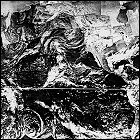 NASA and the United States Weather Bureau launch the ninth experimental TIROS weather satellite, TIROS-9. Heavier than any of the other TIROS experimental satellites, and with cameras mounted on opposite sides of the satellite’s cylindrical body to keep the Earth in view at all times. The result, in February, is the first-ever snapshot of the entire world’s weather patterns within a single day. TIROS-9 also carries other upgrades being considered for an upcoming fleet of full-time operational weather satellites, and remains in service for three and a half years.
NASA and the United States Weather Bureau launch the ninth experimental TIROS weather satellite, TIROS-9. Heavier than any of the other TIROS experimental satellites, and with cameras mounted on opposite sides of the satellite’s cylindrical body to keep the Earth in view at all times. The result, in February, is the first-ever snapshot of the entire world’s weather patterns within a single day. TIROS-9 also carries other upgrades being considered for an upcoming fleet of full-time operational weather satellites, and remains in service for three and a half years.

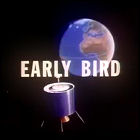 Built for COMSAT (Communications Satellite Corporation) by Hughes Aircraft, borrowing heavily from the design of the successful Syncom experimental satellites earlier in the decade, Intelsat I is launched into a geosynchronous orbit over the Atlantic Ocean, providing telephone, TV, and fax communication via satellite between the United States and Europe. Intelsat I, nicknamed “Early Bird”, doesn’t go operational until COMSAT has completed diagnostics and engineering tests; its first operational use is in June 1965. It will provide satellite transmission of the first live TV coverage of a returning space mission (the splashdown of Gemini 6 in December 1965), and it will be an integral part of the international satellite links necessary for the
Built for COMSAT (Communications Satellite Corporation) by Hughes Aircraft, borrowing heavily from the design of the successful Syncom experimental satellites earlier in the decade, Intelsat I is launched into a geosynchronous orbit over the Atlantic Ocean, providing telephone, TV, and fax communication via satellite between the United States and Europe. Intelsat I, nicknamed “Early Bird”, doesn’t go operational until COMSAT has completed diagnostics and engineering tests; its first operational use is in June 1965. It will provide satellite transmission of the first live TV coverage of a returning space mission (the splashdown of Gemini 6 in December 1965), and it will be an integral part of the international satellite links necessary for the 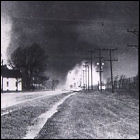 On the 45th anniversary of a similar severe weather event, a major outbreak of violent tornadoes strikes the northern midwest, causing 271 deaths and over a thousand injuries in Wisconsin, Illinois, Indiana, Iowa, Ohio, and Michigan; 137 of the deaths occur in Indiana alone. With weather radar still in its infant state, a radio station in Cedar Rapids spots the first storm on its own radar, while nearby National Weather Service offices do not have radar yet. The U.S. Weather Bureau’s confusing system of “tornado forecasts” and “tornado alerts” is changed to more clearly delineated “watches” and “warnings” after this event.
On the 45th anniversary of a similar severe weather event, a major outbreak of violent tornadoes strikes the northern midwest, causing 271 deaths and over a thousand injuries in Wisconsin, Illinois, Indiana, Iowa, Ohio, and Michigan; 137 of the deaths occur in Indiana alone. With weather radar still in its infant state, a radio station in Cedar Rapids spots the first storm on its own radar, while nearby National Weather Service offices do not have radar yet. The U.S. Weather Bureau’s confusing system of “tornado forecasts” and “tornado alerts” is changed to more clearly delineated “watches” and “warnings” after this event.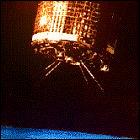 NASA and the United States Weather Bureau launch the tenth and final experimental TIROS weather satellite, TIROS-10. Continuing to test technological upgrades for a fully-functional weather satellite fleet, TIROS-10 also provides additional coverage during hurricane seasons, and remains operational for exactly two years, at which point NASA begins a planned shutdown and phase-out of the experimental TIROS satellites in favor of the Nimbus and ESSA weather satellites.
NASA and the United States Weather Bureau launch the tenth and final experimental TIROS weather satellite, TIROS-10. Continuing to test technological upgrades for a fully-functional weather satellite fleet, TIROS-10 also provides additional coverage during hurricane seasons, and remains operational for exactly two years, at which point NASA begins a planned shutdown and phase-out of the experimental TIROS satellites in favor of the Nimbus and ESSA weather satellites.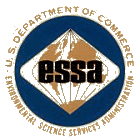 As part of a reorganization of agencies within the U.S. government in 1965, the country’s Weather Bureau becomes part of ESSA, the Environmental Science Services Administration, and is placed under the Department of Commerce. All weather prediction and analysis is now under the jurisdiction of ESSA, including a growing fleet of weather satellites operated jointly by ESSA and NASA. The agency will be renamed the National Oceanic & Atmospheric Administration in
As part of a reorganization of agencies within the U.S. government in 1965, the country’s Weather Bureau becomes part of ESSA, the Environmental Science Services Administration, and is placed under the Department of Commerce. All weather prediction and analysis is now under the jurisdiction of ESSA, including a growing fleet of weather satellites operated jointly by ESSA and NASA. The agency will be renamed the National Oceanic & Atmospheric Administration in 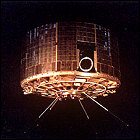 The recently-rechristened Environmental Sciences Service Administration (previously the U.S. Weather Bureau) launches, with the help of NASA, the first “Operational TIROS” weather satellite, ESSA-1. Based on the architecture of the later TIROS satellites, this is intended to be the first fully-operational, long-life weather satellite, in the tradition of many of the long-lived TIROS weather satellites. But eight months into its operational lifetime, ESSA-1’s on board camera system fails, rendering it blind – it becomes useless as a weather satellite and is kept online for engineering experiments until spring 1967.
The recently-rechristened Environmental Sciences Service Administration (previously the U.S. Weather Bureau) launches, with the help of NASA, the first “Operational TIROS” weather satellite, ESSA-1. Based on the architecture of the later TIROS satellites, this is intended to be the first fully-operational, long-life weather satellite, in the tradition of many of the long-lived TIROS weather satellites. But eight months into its operational lifetime, ESSA-1’s on board camera system fails, rendering it blind – it becomes useless as a weather satellite and is kept online for engineering experiments until spring 1967.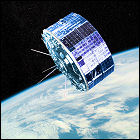 The recently-rechristened Environmental Sciences Service Administration (previously the U.S. Weather Bureau) launches, with the help of NASA, weather satellite ESSA-2, intended to be the second in a constellation of spaceborne observers of Earth’s weather. Virtually identical to ESSA-1, ESSA-2 monitors Earth’s cloud cover for over four years; it is decommissioned in
The recently-rechristened Environmental Sciences Service Administration (previously the U.S. Weather Bureau) launches, with the help of NASA, weather satellite ESSA-2, intended to be the second in a constellation of spaceborne observers of Earth’s weather. Virtually identical to ESSA-1, ESSA-2 monitors Earth’s cloud cover for over four years; it is decommissioned in 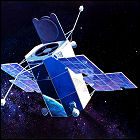 NASA launches its first space-based telescope, the unmanned Orbiting Astronomical Observatory satellite, into Earth orbit. Weighing nearly two tons and sporting visible, ultraviolet, X-ray and gamma ray astronomy capabilities, OAO is in trouble mere minutes after it goes into service: a serious electrical failure leaves the spacecraft in a blind tumble, and it will be declared a loss three days after launch. NASA will attempt another OAO launch in 1968.
NASA launches its first space-based telescope, the unmanned Orbiting Astronomical Observatory satellite, into Earth orbit. Weighing nearly two tons and sporting visible, ultraviolet, X-ray and gamma ray astronomy capabilities, OAO is in trouble mere minutes after it goes into service: a serious electrical failure leaves the spacecraft in a blind tumble, and it will be declared a loss three days after launch. NASA will attempt another OAO launch in 1968.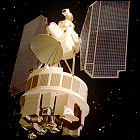 NASA launches the Nimbus 2 satellite, designed to observe weather patterns from orbit and test new weather and climate detection technologies. Nimbus 2’s only means of data storage fails within weeks, and that system’s only backup fails later in the year. Nimbus 2 is shut down in 1969 when the system it uses to maintain orientation to Earth’s horizon also fails.
NASA launches the Nimbus 2 satellite, designed to observe weather patterns from orbit and test new weather and climate detection technologies. Nimbus 2’s only means of data storage fails within weeks, and that system’s only backup fails later in the year. Nimbus 2 is shut down in 1969 when the system it uses to maintain orientation to Earth’s horizon also fails.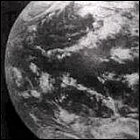 NASA launches Aplications Technology Satellite-1, the first of a new series of experimental satellites with a goal of combining the functions of existing weather and communication satellites, with other technology demonstrations added on. ATS-1 transmits the first-ever view of the entire face of Earth visible from geosynchronous orbit, as well as testing some of the first satellite navigation technology. ATS-1’s position in orbit also proves ideal for the North-America-to-Australia link during 1967’s global Our World broadcast. ATS-1 remains in serice for almost exactly 12 years.
NASA launches Aplications Technology Satellite-1, the first of a new series of experimental satellites with a goal of combining the functions of existing weather and communication satellites, with other technology demonstrations added on. ATS-1 transmits the first-ever view of the entire face of Earth visible from geosynchronous orbit, as well as testing some of the first satellite navigation technology. ATS-1’s position in orbit also proves ideal for the North-America-to-Australia link during 1967’s global Our World broadcast. ATS-1 remains in serice for almost exactly 12 years. French astronomer Audouin Dollfus discovers Janus, the tenth discovered natural satellite of the planet Saturn, orbiting just beyond the outer edge of Saturn’s ring. Confusion is caused when, mere days later, an American astronomer discovers another body in a near-identical orbit that cannot be reconciled with the orbit calculated for Janus. Only in the late 1970s will a theory emerge that explains the inconsistencies as the presence of two moons moving around Saturn as a co-orbital pair, occasionally swapping positions. Janus’ existence will be verified in 1980 by Voyager 1. (Janus is shown here in a 21st century Cassini photo.)
French astronomer Audouin Dollfus discovers Janus, the tenth discovered natural satellite of the planet Saturn, orbiting just beyond the outer edge of Saturn’s ring. Confusion is caused when, mere days later, an American astronomer discovers another body in a near-identical orbit that cannot be reconciled with the orbit calculated for Janus. Only in the late 1970s will a theory emerge that explains the inconsistencies as the presence of two moons moving around Saturn as a co-orbital pair, occasionally swapping positions. Janus’ existence will be verified in 1980 by Voyager 1. (Janus is shown here in a 21st century Cassini photo.)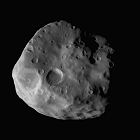 Just days after the discovery of a satellite in a near-identical orbit, U.S. Naval Observatory astronomer Richard Walker discovers Epimetheus, another natural satellite of the planet Saturn, again orbiting just beyond the outer edge of Saturn’s ring. Many of Walker’s fellow astronomers believe this is merely a second sighting of Janus, discovered mere days before, but irregularities in the computed orbits vex astronomers well into the 1970s, at which point it is conceded that the observations are best explained by two satellites in a very close orbit to one another. Epimetheus and Janus will next be spotted by Voyager 1 in 1980, conclusively proving the existence of two bodies. Epimetheus’ name won’t be made official until 1983. (Epimetheus is shown here in a 21st century Cassini photo.)
Just days after the discovery of a satellite in a near-identical orbit, U.S. Naval Observatory astronomer Richard Walker discovers Epimetheus, another natural satellite of the planet Saturn, again orbiting just beyond the outer edge of Saturn’s ring. Many of Walker’s fellow astronomers believe this is merely a second sighting of Janus, discovered mere days before, but irregularities in the computed orbits vex astronomers well into the 1970s, at which point it is conceded that the observations are best explained by two satellites in a very close orbit to one another. Epimetheus and Janus will next be spotted by Voyager 1 in 1980, conclusively proving the existence of two bodies. Epimetheus’ name won’t be made official until 1983. (Epimetheus is shown here in a 21st century Cassini photo.)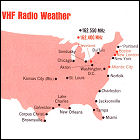 The U.S. Weather Bureau announces plans to expand its Weather Radio service across the country, with forecasts now prepared and worded for public consumption (as opposed to the service’s original 1950s mission of providing weather information for airline pilots). Concentrated primarily in coastal areas and a handful of inland population centers, the Weather Radio network has yet to become the Bureau’s primary means of disseminating emergency weather information, a mission it won’t take on until the 1970s.
The U.S. Weather Bureau announces plans to expand its Weather Radio service across the country, with forecasts now prepared and worded for public consumption (as opposed to the service’s original 1950s mission of providing weather information for airline pilots). Concentrated primarily in coastal areas and a handful of inland population centers, the Weather Radio network has yet to become the Bureau’s primary means of disseminating emergency weather information, a mission it won’t take on until the 1970s.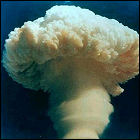 The People’s Republic of China conducts a nuclear weapons test under the nondescript code name Test No. 6, which is in fact China’s first thermonuclear (hydrogen) bomb test. Dropped by an aircraft, Test No. 6 has a yield of 3.3 megatons. For context, China had conducted its first nuclear test barely three years earlier.
The People’s Republic of China conducts a nuclear weapons test under the nondescript code name Test No. 6, which is in fact China’s first thermonuclear (hydrogen) bomb test. Dropped by an aircraft, Test No. 6 has a yield of 3.3 megatons. For context, China had conducted its first nuclear test barely three years earlier.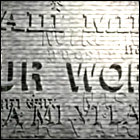 An international production caried out live via satellite on a scale previously unimagined, Our World chronicles the activities of several countries in an all-star, real time TV broadcast to 26 countries, with segments aired live from Canada, the United States, Britain, Japan and Australia – the producers, based at the BBC, forbid pre-taped segments. Celebrity guests taking part in the live broadcast include painter Pablo Picasso, Marshall McLuhan, and the Beatles (performing “All You Need Is Love”); events seen happening live include the construction of a Saturn V rocket at Kennedy Space Center and the construction of the Japanese subway system. As laid out in the planning documents for the broadcast, which took nearly a year to prepare for, no heads of state or political figures are permitted to appear; the Soviet Union, East Germany, Czechoslovakia, Hungary and Poland abruptly end their participation just four days before the airdate, protesting the west’s stance on the Six Day War in the Middle East. An estimated 400 million people watch worldwide – the largest audience of any single television broadcast to date.
An international production caried out live via satellite on a scale previously unimagined, Our World chronicles the activities of several countries in an all-star, real time TV broadcast to 26 countries, with segments aired live from Canada, the United States, Britain, Japan and Australia – the producers, based at the BBC, forbid pre-taped segments. Celebrity guests taking part in the live broadcast include painter Pablo Picasso, Marshall McLuhan, and the Beatles (performing “All You Need Is Love”); events seen happening live include the construction of a Saturn V rocket at Kennedy Space Center and the construction of the Japanese subway system. As laid out in the planning documents for the broadcast, which took nearly a year to prepare for, no heads of state or political figures are permitted to appear; the Soviet Union, East Germany, Czechoslovakia, Hungary and Poland abruptly end their participation just four days before the airdate, protesting the west’s stance on the Six Day War in the Middle East. An estimated 400 million people watch worldwide – the largest audience of any single television broadcast to date.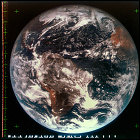 NASA launches Applications Technology Satellite-3, bundling new technology demonstrations onto a new weather satellite in geosynchronous orbit. Offering the first color view of Earth from that orbit, ATS-3 also relays weather data to specially equipped ground stations. It remains in service through
NASA launches Applications Technology Satellite-3, bundling new technology demonstrations onto a new weather satellite in geosynchronous orbit. Offering the first color view of Earth from that orbit, ATS-3 also relays weather data to specially equipped ground stations. It remains in service through 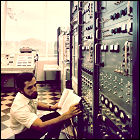 Cornell University student Richard Lovelace, working at the Cornell-funded Arecibo Radio Telescope in Puerto Rico, uses the massive telescope and its on-site computers to determine the rotational period of a pulsar discovered near the center of the Crab Nebula, approximately 6,500 light years from Earth. The position of the pulsar relative to the nebula strengthens the case for pulsars and (still hypothetical) neutron stars occurring at the heart of supernova remnants. The Crab Nebula pulsar had been discovered only three years earlier.
Cornell University student Richard Lovelace, working at the Cornell-funded Arecibo Radio Telescope in Puerto Rico, uses the massive telescope and its on-site computers to determine the rotational period of a pulsar discovered near the center of the Crab Nebula, approximately 6,500 light years from Earth. The position of the pulsar relative to the nebula strengthens the case for pulsars and (still hypothetical) neutron stars occurring at the heart of supernova remnants. The Crab Nebula pulsar had been discovered only three years earlier.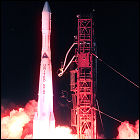 The recently-rechristened Environmental Sciences Service Administration launches, with the help of NASA, ESSA-9, the latest in a constellation of weather satellites. ESSA-9 is the last weather satellite to carry the ESSA designation, as the government reorganizes ESSA into a new agency, NOAA, the following year. ESSA-9 remains in service until
The recently-rechristened Environmental Sciences Service Administration launches, with the help of NASA, ESSA-9, the latest in a constellation of weather satellites. ESSA-9 is the last weather satellite to carry the ESSA designation, as the government reorganizes ESSA into a new agency, NOAA, the following year. ESSA-9 remains in service until 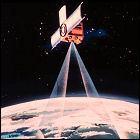 NASA and ESSA launch the ITOS satellite, also known as TIROS-M, a next-generation weather satellite intended to take over from the constellation of short-lived ESSA weather satellites. With a configuration that is, for the first time, significantly different from the TIROS/ESSA satellites, the TIROS-M design’s shakedown cruise is a short and bumpy one: after system failures force a shutdown of the satellite’s attitude control system, it is shut down in mid-
NASA and ESSA launch the ITOS satellite, also known as TIROS-M, a next-generation weather satellite intended to take over from the constellation of short-lived ESSA weather satellites. With a configuration that is, for the first time, significantly different from the TIROS/ESSA satellites, the TIROS-M design’s shakedown cruise is a short and bumpy one: after system failures force a shutdown of the satellite’s attitude control system, it is shut down in mid-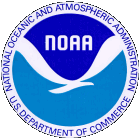 The United States government reorganizes ESSA (the Environment Science Services Administration) into NOAA or the National Oceanic & Atmospheric Administration, an agency responsible for weather prediction and research and for functions involving oceanic conditions, coastal fisheries, and then-current investigations of a potential Alaskan oil pipeline.
The United States government reorganizes ESSA (the Environment Science Services Administration) into NOAA or the National Oceanic & Atmospheric Administration, an agency responsible for weather prediction and research and for functions involving oceanic conditions, coastal fisheries, and then-current investigations of a potential Alaskan oil pipeline.